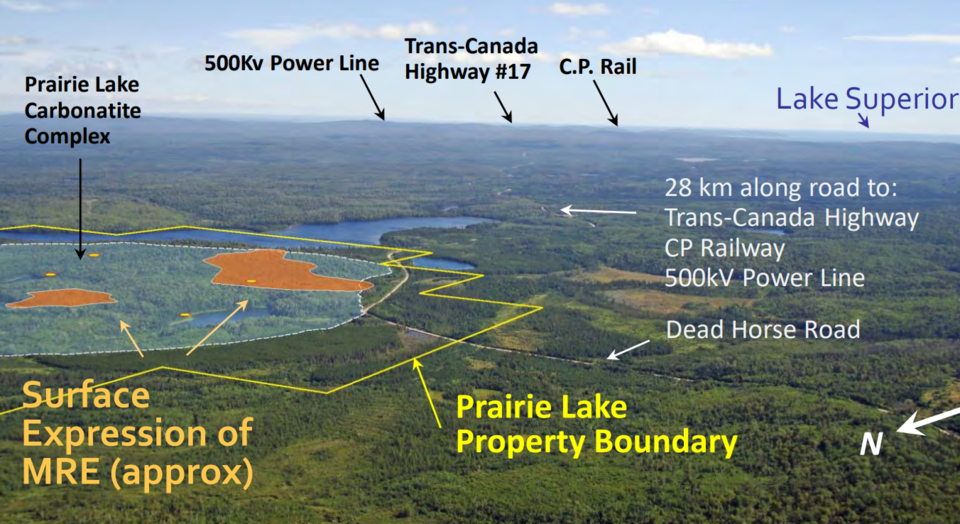A northwestern Ontario junior miner, eager to get into critical minerals mining, has posted a substantial boost in the grade of the phosphate rock at its exploration property northwest of Marathon.
Toronto-based Nuinsco Resources believes it has a more valuable and higher-grade asset than originally reported in 2022 since adopting a five per cent cut-off grade for mineralization at its Prairie Lake deposit.
In mining vernacular, a cut-off grade is the grade of mineralization that a deposit can be economically mined and also dictates which drilling intercepts can and can’t be used in a resource. The cut-off grade is usually determined by the cost to mine a deposit and sell the mineral commodity.
Located 28 kilometres north of the Trans-Canada Highway, near the north shore of Lake Superior, Prairie Lake contains a combination of phosphate, rare earth elements and niobium, all considered critical minerals by the Canadian and Ontario governments.
While no decision has been made to construct a mine, the company is evaluating whether to carve out a starter pit and begin mining as a quarry operation.
Nuinsco made a similar statement back in 2022 but has yet to release a preliminary economic assessment, which is a technical and economic study of what a mine could look like.
Mineralization at Prairie Lake begins at the surface and extends down past drilled depths of more than 500 metres.
Back in May 2022, Nuinsco used a two per cent cut-off grade to post a maiden resource estimate at Prairie Lake showing 871.8 million tonnes of rare earth oxides, niobium and phosphates in the inferred category and 15.6 million tonnes on the indicated side.
Indicated and inferred resources have to do with the degree of confidence in a mineral resource, with indicated being of higher confidence and inferred being lower.
With the five per cent cut-off grade applied, Nuinsco said it now translates to a 65-million-tonne inferred resource grading at 5 per cent and a 1.2 million-tonne indicated grading 5.8 per cent within Prairie Lake’s nearly 900-million-tonne resource. The company said that’s up nearly 74 per cent from the phosphate grade put out in 2022.
“The delineation of these higher-grade phosphate and REE mineralization will allow greater leeway in planning and development — for instance development of a starter pit,” Nuinsco CEO Paul Jones in a statement.
Nuinsco considers Prairie Lake to be an advanced exploration play that’s capable of meeting the North American demand for critical minerals in transportation, power distribution, green technology and agriculture applications.
Their geological team has been out in the field sampling, mapping and examining pouring old drill core assays from exploration programs by other companies dating back to the late 1960s. They’ve reportedly identified new high-grade phosphate zones based on that review.
Prairie Lake is one of three Northern Ontario properties Nuinsco holds an interest in, alongside its Zig Zag Lake lithium, tantalum property near Armstrong, optioned to First Class Metals PLC, and a royalty held with its Sunbeam gold property outside Atikokan.
